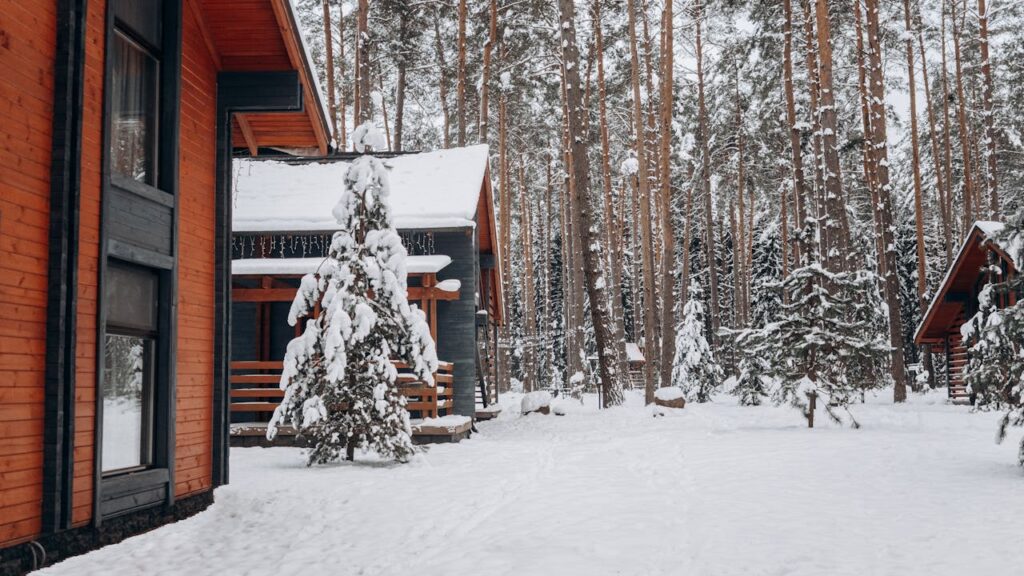Winter can be a challenging time for homeowners. Snow, ice, and freezing temperatures can lead to all sorts of problems for your house. It is important to know how these weather conditions might affect your home insurance. By understanding the risks, you can take steps to protect your property and maybe even save on insurance costs.
Snow and ice buildup can damage roofs and pipes, while freezing temperatures might cause plumbing issues. These problems could result in insurance claims that impact your premiums. Knowing what your home insurance covers and learning about extra options could make a big difference.
Taking steps to prepare your home for winter can help avoid costly repairs. With the right measures, you can keep your home safe and reduce potential damage. Understanding how winter weather affects home insurance is your first step in making sure your home is ready for the cold months ahead.
Types of Damage from Snow and Ice
Winter brings a host of challenges that can damage your home. Snow and ice are major culprits, each posing unique threats. Heavy snow accumulation can weigh down your roof, potentially leading to structural damage or even a collapse if not properly cleared. This weight can also affect gutters, causing them to detach or leak.
Ice is a slippery troublemaker. When water freezes, it can create ice dams on your roof. These ice dams block proper drainage, forcing water under shingles and into your home. This can result in water damage to ceilings, walls, and insulation. Additionally, frozen water in gutters or pipes can cause them to crack or burst, leading to leaks and extensive water damage inside your home.
Slippery ice also creates hazards around your property. Driveways and walkways become dangerous when icy, increasing the risk of slips and falls for family and visitors. Each of these issues not only results in immediate repair costs but can also lead to big headaches with home insurance claims.
Impact of Freezing Temperatures
Freezing temperatures are another significant concern during Canadian winters. Prolonged cold spells can cause problems inside your home, particularly with plumbing. When water freezes, it expands, and this expansion can lead to cracked or burst pipes. If a pipe bursts, it can flood your home with water, causing extensive damage.
Frozen pipes aren’t the only worry. Extreme cold can also affect your heating system. If your furnace or heating system fails, your home can quickly become uncomfortable. Worse yet, a lack of heat can compound other cold-related damage, such as frozen pipes or cracked walls and floors due to temperature-induced contraction.
Moreover, the constant cycle of freezing and thawing can damage your home’s foundation. Cracks in the foundation can form from this temperature fluctuation, potentially leading to structural issues over time. These problems might not be immediately evident but can result in costly repairs down the road.
Common Claims Filed During Winter
Winter is a busy season for home insurance claims. Many claims revolve around water damage, often caused by ice dams and burst pipes. When water leaks into the home, it can ruin floors, walls, and personal belongings, prompting these claims.
Another common claim type concerns roofs and gutters. Heavy snow can damage roofs, leading to leaks and structural problems. Faulty or overburdened gutters might result in water overflow, causing stains and damage to the exterior walls. Slips and falls on icy walkways can also lead to liability claims, especially if visitors sustain injuries on your property.
Fire claims sometimes increase in winter too. As people use heating appliances and fireplaces more during cold months, the risk of house fires increases, which can lead to significant damage. All these claims can significantly impact your insurance standing.
Factors Influencing Premium Increases
Filing insurance claims in the winter can affect your premiums. Insurance companies might view frequent claims as an indicator of risk, leading to possible rate hikes. The nature of the claim also matters; large or repeated claims can suggest underlying problems with home maintenance or location-related issues.
Your personal claims history plays a significant role in determining your premiums. If you’ve filed several claims over the years, your insurer might see you as a higher risk. This might lead to increased premiums as a way to buffer against potential future claims.
Moreover, the location of your home can influence premiums. Homes in regions prone to heavy snowfall or extreme cold might face higher rates due to the higher likelihood of damage. Homes that have been upgraded to prevent winter-related damage, such as by installing better insulation or upgrading heating systems, might qualify for discounts, which could help offset any increases.
Understanding Standard Home Insurance Policies
Standard home insurance policies often provide coverage for certain types of winter weather damage, but not everything is automatically included. Generally, these policies cover damage from the weight of snow or ice on roofs and potential leaks or collapses that may occur as a result. However, coverage can vary depending on the insurer and the specific policy.
Typically, damage from burst pipes might also be covered, but there are conditions. Insurers usually expect homeowners to maintain their properties, which includes keeping pipes from freezing. If negligence is shown, a claim might be denied. It’s important to read the fine print of your policy to understand what’s covered and what’s not.
Personal liability coverage is another aspect of standard policies. If someone slips on your icy walkway and gets injured, liability coverage can help protect you against lawsuits. However, you might want to consider additional protection given the increased risks winter poses.
Additional Coverage Options to Consider
Given the unique challenges winter poses, homeowners might consider additional coverage options. One such option is ice dam insurance, which specifically covers damage related to ice dams, preventing extensive water damage.
Upgrading to a more comprehensive policy that includes pipe maintenance failures might be a good idea. These policies can provide peace of mind that unexpected bursts won’t create financial strain. Another option to explore is coverage for additional living expenses. If your home suffers severe damage and you need temporary housing, this can cover extra costs.
Consider bundling your home insurance with other policies, like auto insurance, for potential discounts. This could free up some budget to enhance winter-related coverage. Always consult with your insurer to tailor a policy that reflects your specific needs and ensures adequate protection during the colder months.
Tips for Winterizing Your Home
Winterizing your home can prevent many costly problems. Start with the roof. Keep it clear of heavy snow and check for any signs of wear. Inspect your gutters to ensure they’re not clogged with leaves or debris. This helps prevent ice dams from forming.
Don’t forget about your pipes. Insulate exposed pipes, especially in attic and basement areas. Let faucets drip during extreme cold spells to prevent freezing. Make sure your home’s heating system is in top shape too. Have it inspected by a professional to ensure it’s running efficiently and safely.
Seal any drafts around windows and doors to keep your home warm and reduce heating costs. Use weather stripping or caulk to seal gaps and add heavy curtains for extra insulation. These small steps help maintain a cozy environment inside and protect vital home systems.
How to Minimize Potential Damage
Besides basic winterizing, consider more specific actions to minimize damage. Install roof heating cables to prevent ice dam formation, especially in areas prone to large snowfalls. These cables help melt the snow, allowing proper drainage.
Invest in a good snow removal service or purchase proper tools to clear walkways, driveways, and roofs promptly. Ice removal from these areas can prevent slips and ensure safe access to your home.
Regularly check your home’s foundation for cracks. Any detected should be sealed to stop water from entering. Inside, keep an eye out for damp or wet spots on your ceiling or walls. Early detection of leaks can prevent further water damage.
Wrapping Up the Cold Truth About Home Insurance
Winter weather presents a myriad of challenges for homeowners, and understanding how they affect home insurance can save you a lot of trouble. Snow, ice, and freezing temperatures can lead to significant damage if precautions are not in place. By knowing what your standard policy covers and considering additional options, you can better protect your home from winter woes.
Preparation is key. Implementing preventive measures can help keep your home safe and reduce the risk of damage. This includes performing regular maintenance and being proactive about potential winter threats. Understanding insurance options ensures that you’re not caught off guard should the unexpected happen.
Taking the time to winterize your home and understand your insurance coverage provides peace of mind. Facing the winter season head-on, equipped with the right knowledge and tools, is the best strategy for any homeowner.
For expert advice on optimizing your home insurance for winter, reach out to Ai Insurance Organization Inc. Our Canadian insurance brokers offer personalized solutions that help you navigate the chilling challenges of winter while ensuring your home remains protected all year round.
Disclaimer: The information provided in this article is intended for illustrative purposes only and should not be considered as actual insurance advice. Our articles offer insights and general guidance on various insurance topics; however, they do not substitute professional advice tailored to your specific circumstances. For expert, personalized insurance advice and solutions, please contact our licensed insurance brokers.












